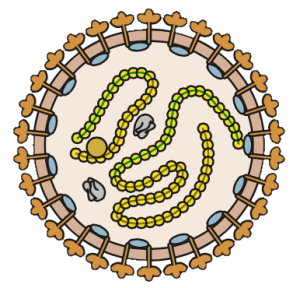

Lassa virus, a member of the Arenavirus family, is very different from Ebolavirus (a filovirus), but both are zoonotic pathogens that may cause hemorrhagic fever. It is responsible for tens of thousands of hospitalizations, and thousands of deaths each year, mainly in Sierra Leone, Guinea, Liberia, and Nigeria. Most human Lassa virus outbreaks are caused by multiple exposures to urine or feces from the multimammate mouse, Mastomys natalensis, which is the reservoir of the virus in nature. In contrast, outbreaks of Ebolavirus infection typically originate with a crossover from an animal reservoir, followed by human to human transmission. Despite being studied for nearly 50 years, until recently the nucleotide sequences of only 12 Lassa virus genomes had been determined.
To remedy this lack of Lassa virus genome information, the authors collected clinical samples from patients in Sierra Leone and Nigeria between 2008 and 2013. From these and other sources they determined the sequences of 183 Lassa virus genomes from humans, 11 viral genomes from M. natalensis, and two viral genomes from laboratory stocks. All the data are publicly available at NCBI. Analysis of the data lead to the following conclusions:
- Lassa virus forms four clades, three in Nigeria and one in Sierra Leona/Liberia (members of a clade evolved from a common ancestor).
- Most Lassa virus infections are a consequence of multiple, independent transmissions from the rodent reservoir.
- Modern-day Lassa virus strains probably originated at least 1,000 years ago in Nigeria, then spread to Sierra Leone as recently as 150 years ago. The lineage is most likely much older, but how much cannot be calculated from the data.
- The genetic diversity of Lassa virus in individual hosts is an order of magnitude greater than the diversity of Ebolavirus. Furthermore, Lassa virus diversity in the rodent host is greater than in humans, likely a consequence of the longer, persistent infections that take place in the mouse.
- The gene encoding the Lassa virus glycoprotein is subject to high selection in hosts, leading to variants that interfere with antibody binding.
- Genetic variants that arise in one rodent are not transmitted to another.
Perhaps the most important result from this work is the establishment of laboratories in Sierra Leone and Nigeria that can safely collect and process samples from patients infected with Lassa virus, a BSL-4 pathogen.

Pingback: Lassa virus evolution | Tools and tips for scie...